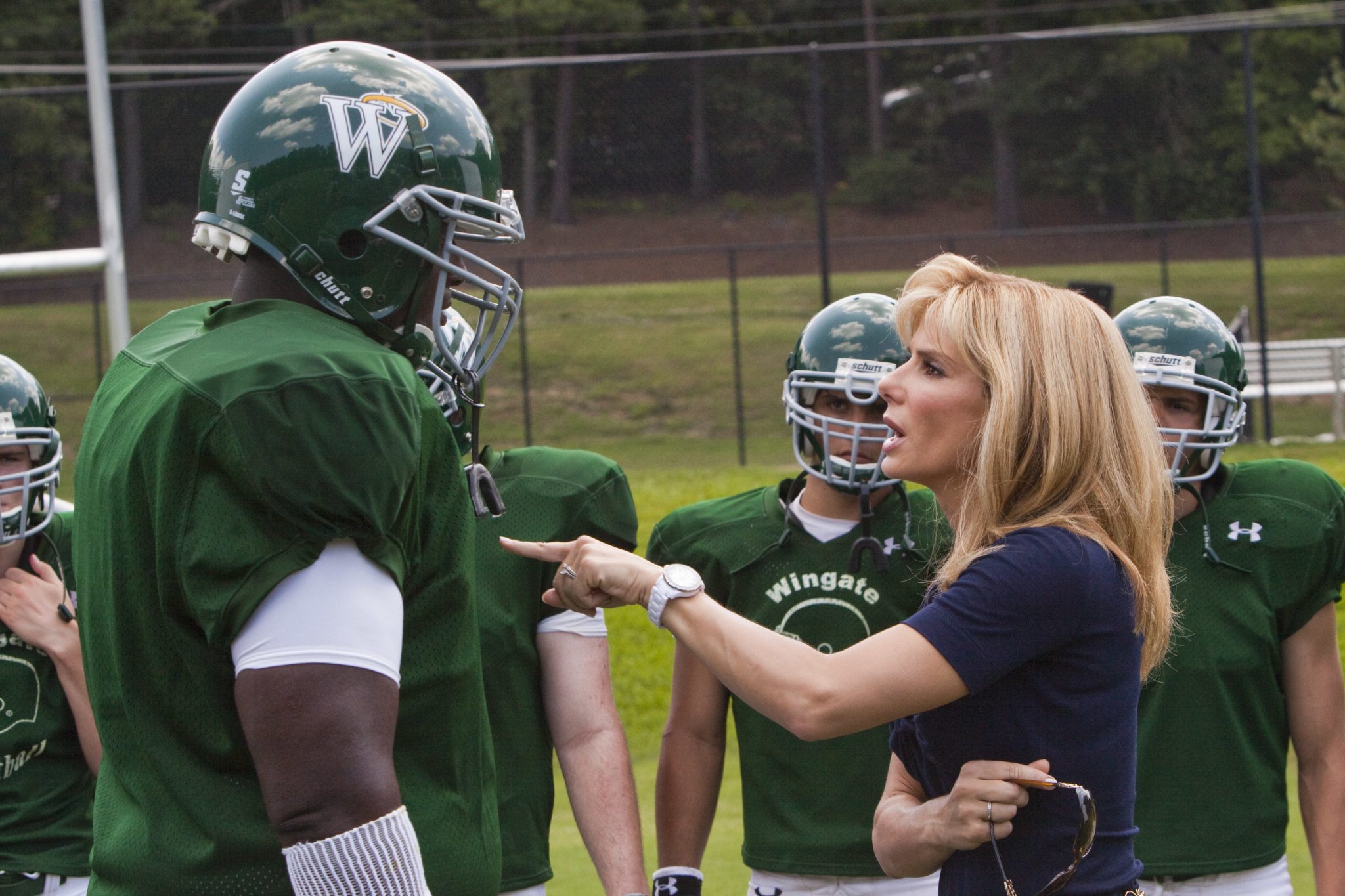Historical films are notorious for stretching the original story and taking historical liberties to ensure their audience is interested in the topic. However, issues arise as people without a history background tend to take historical biopics as the entire truth. Here, we examine eight biopics that are so inaccurate they can’t even be dubbed “based on a true story.”
1. Pocahontas

Although no one really considers Disney’s Pocahontas to be a historical biopic, it is completely ignorant of real history. This is dangerous because it is a children’s movie and it would be easy for youngsters to believe that the Disney version is the real story of Pocahontas.
The primary issue with Disney’s portrayal of Pocahontas is that it completely romanticizes the story- as in literally puts a romantic spin on it. In 1607, the real Pocahontas met the real John Smith. When the two first met, Pocahontas was only 10 or 11 years old, while John Smith was 27 years old. Historically speaking, Pocahontas worked as a liaison between the British and the Powhatan Chiefdom. Any real romance between the real Pocahontas and John Smith would have been extremely inappropriate and troublesome.
2. Remember the Titans
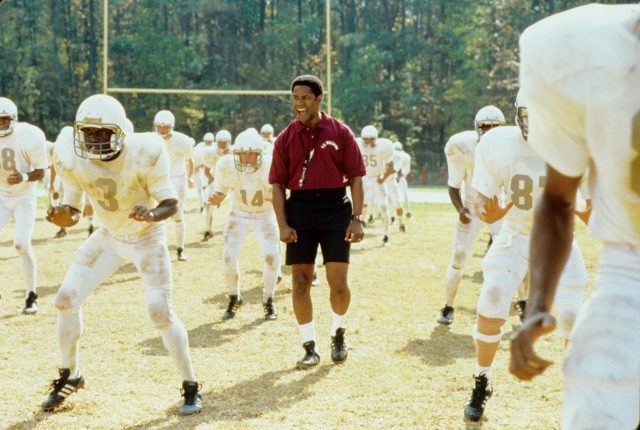
The movie Remember the Titans (2000) is based on the true story of T.C. Williams High School in Alexandria, Virginia. A large portion of Remember the Titans focused on the school’s integration in the year 1971. As a result, there was extreme racial tension present on the football team. However, in reality, T.C. Williams High School was integrated in 1965. As such, by the year 1971 (the year the movie was set in), there was not as much racial tension present on the football team, as the school had already been integrated for six years. That is not to say that racial tensions were not still present in 1971 Virginia, but Remember the Titans largely exaggerates them to create more drama in the movie.
There are many other historical exaggerations present in Remember the Titans. For example, the character Gerry Bertier was paralyzed in real life from a car accident, but that accident happened after the 1971 season- not before as the movie had its audience believe. Similarly, the Titans were not the underdogs that the movie would have its audience believe, rather their 1971 season included nine cutouts and a 27-0 state championship game win. Part of the reason why the Titans were so dominating in real life was because T.C. Williams was actually comprised of three high schools in Alexandria, meaning it had a huge pool of talent to choose from.
3. The Sound of Music
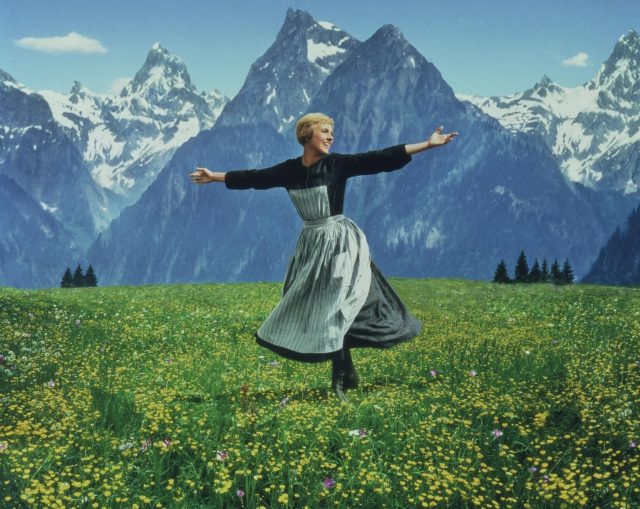
As one of our favorite movies, learning that The Sound of Music was not all that historically accurate really hurt. The Sound of Music was based on the book published by the real Maria von Trapp in 1949, titled The Story of the Trapp Family Singers. For starters, the real Maria Von Trapp was sent to tutor only one of Baron Georg von Trapp’s children, as opposed to all of them.
The real Trapp family began singing and performing publicly in the mid-1930s, rather than right before the start of the Second World War as the movie depicts. Another glaring difference is the fact that the von Trapps escape from Austria didn’t involve crossing the Swiss Alps. In fact, the family escaped from Austria in broad daylight by boarding a train that ultimately took them to Italy. If the family had scaled the Alps in real life, they would have crossed into Nazi Germany rather than neutral Switzerland, which was 200 miles away.
Perhaps the most glaring historical inaccuracy of The Sound of Music was that Baron von Trapp was a much more involved father than the movie portrays, and the real Maria wasn’t always as kind as Julie Andrews’s version of her. Joan Gearin of the National Archives states, “the real-life Maria wasn’t always as sweet as the fictional Maria. She tended to erupt in angry outbursts consisting of yelling, throwing things, and slamming doors.”
4. The Blind Side
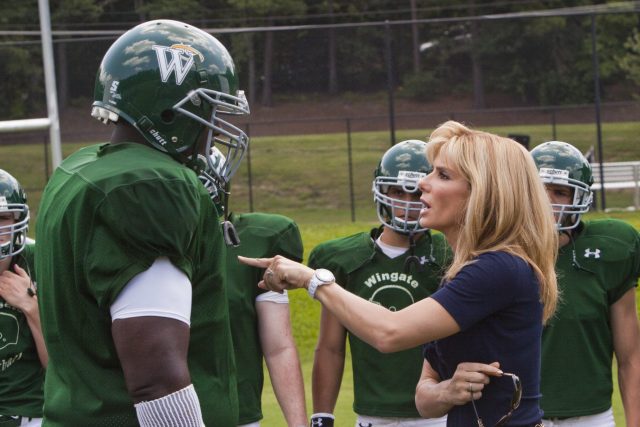
Despite Sandra Bullock winning a Best Actress Academy Award for her portrayal of Leigh Anne Tuohy in The Blind Side (2009), and the film being up for a Best Picture nomination, The Blind Side is not very historically accurate at all.
In fact, the real Michael Oher didn’t like his portrayal in the Blind Side at all, and feels that the movie hurt his real NFL career. In 2009, Oher told ESPN reporter David Newton, “People look at me, and they take things away from me because of a movie. They don’t really see the skills and the kind of player I am. That’s why I get downgraded so much, because of something off the field.”
Oher also feels that the movie has caused people to hold him to an unrealistic standard when it comes to football, saying, “This stuff, calling me a bust, people saying if I can play or not… that has nothing to do with football. It’s something else off the field. That’s why I don’t like that movie… That’s why people criticize me. That’s why people look at me every single play.”
Even if the real Michael Oher loved the movie, there are still glaring inaccuracies. For starters, it is true that Oher did have a very difficult early life, including his father being murdered, homelessness, his mother dealing with drugs and alcohol, and racial tensions. For the sake of the movie, these difficulties were oversimplified and not discussed as much as the real Michael Oher would have liked. Similarly, both the real Touhy family and Michael Oher had doubts about him being adopted into the family, and at times the real Touhy family could be racist.
5. Bohemian Rhapsody
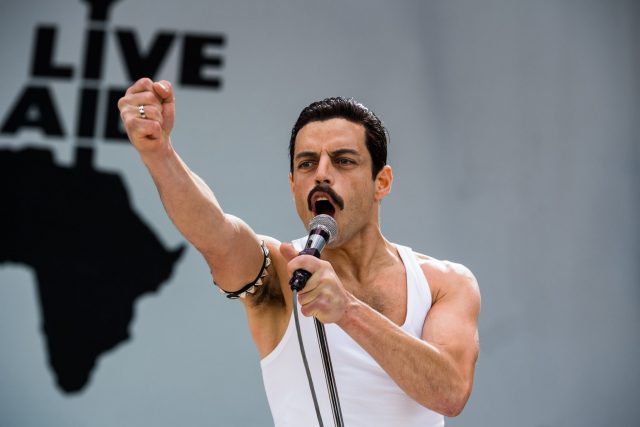
Interestingly, Bohemian Rhapsody (2018) is historically inaccurate because it made the real Freddie Mercury story more “PG rated” than his actual life was. Initially, actor Sacha Baron Cohen was cast as Mercury in the biopic on the singer’s life, but dropped out of the project because it wasn’t “R-rated” enough.
Sacha Baron Cohen initially thought that the film was going to explore the darker sides of Mercury’s life, but when the surviving members of Queen, who own the rights to the Bohemian Rhapsody story, wanted something more family-friendly, the actor pulled out. According to Sacha Baron Cohen, “there are amazing stories about Freddie Mercury. The guy was wild. There are stories of little people with plates of cocaine on their heads walking around a party.” However, these stories would not make the film, because Queen wanted to “protect their legacy as a band.”
In Sacha Baron Cohen’s version of Bohemian Rhapsody, he also wanted to further explore Freddie Mercury’s battle with HIV/ AIDS, something that wasn’t touched on too much in the final cut of the movie. However, in this case, perhaps it is a positive that the substance abuse storyline was left out of the film. Despite it being the real story, it would perhaps take away from the other aspects of Freddie Mercury’s incredible story.
6. JFK
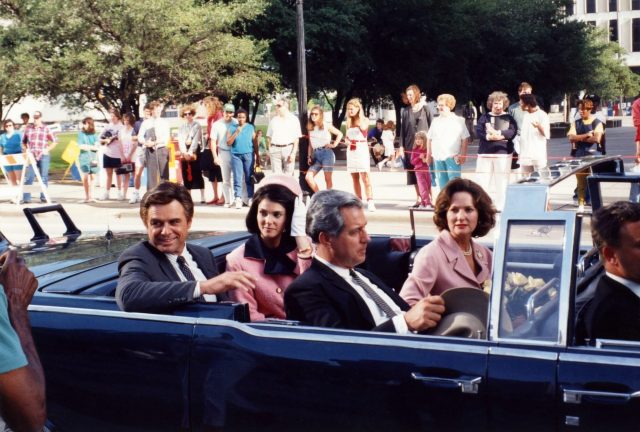
Perhaps one of the most historically inaccurate biopics of all time, Oliver Stone’s JFK (1991) essentially pushes conspiracy theories for three hours and 26 minutes. The film opens in a controversial way, presenting Kennedy in a documentary montage sort of way, mixing real footage with fictional footage, making a discreet claim for documentary-level accuracy.
The movie focuses on a New Orleans district attorney named Jim Garrison (played by Kevin Costner) who puts together a case regarding JFK’s death. During this case, Garrison uncovers a plot within the American government to eradicate Kennedy that involves the CIA, FBI, and American military.
The issue with this film, other than being completely false, is that a huge portion of the American public continues to believe in the JFK assassination conspiracy theory. Because Oliver Stone’s JFK presents itself almost as a documentary, it is easy for people without proper background knowledge to get sucked into these theories.
7. The Greatest Showman
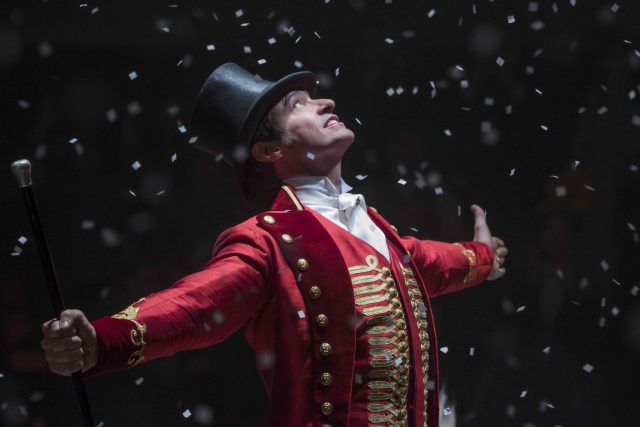
The 2017 film The Greatest Showman depicts the rags-to-riches story of Phineas Taylor “P.T.” Barnum, who starts a circus to give his family a better life. However, The Greatest Showman sugarcoats many aspects of Barnum’s life, and makes the audience believe that he really cared about the people involved in his circus. The reality of the situation is much darker than the movie makes it out to be.
The real Barnum grew up in the antebellum north, where at 25 he purchased the “right” to “rent” an elderly Black woman named Joice Heth. Barnum marketed Heth as George Washington’s 161-year-old nurse. Barnum continued to exploit Heth after she passed away in February 1836 by hosting a live autopsy in a New York Saloon, where 1500 spectators paid 50 cents to see her cut up.
Barnum also made money from exploiting people’s physical disabilities. At the Barnum’s American Museum, an exhibit included a caged human being who was marketed as “the connecting link between man and monkey,” with the tagline “What is it?” He also chartered a ship to steal elephants from their home in Sri Lanka.
8. Rudy
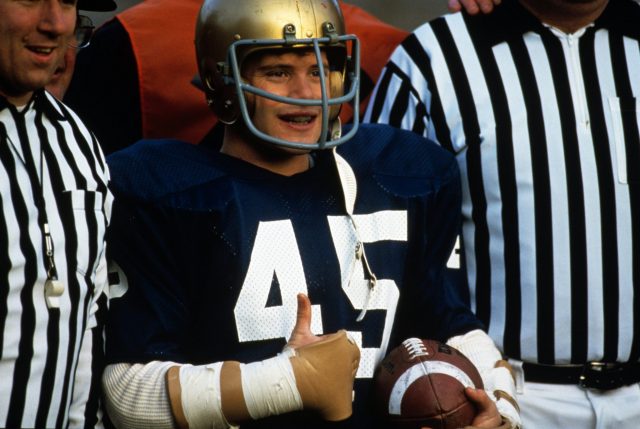
Despite being one of the most heartwarming sports movies ever made, Rudy is filled with embellishments and inaccuracies. Since the movie came out in 1993, football legend Joe Montana, who was teammates with the real Daniel “Rudy” Ruettiger, has set the record straight on Rudy’s time at Notre Dame.
The most memorable scene in the movie is when Rudy got a chance to play for Notre Dame in a game against Georgia Tech, and while on the field made an incredible sack. Notre Dame wins the game, the crowd is chanting Rudy’s name, and Rudy gets carried off the field by his teammates.
More from us: Crazy Scenes From Historical Movies That Really Happened
However, according to Joe Montana, “was the crowd chanting? No. Did I throw in my jersey? No. Did he get carried off the field? He got carried off by three of the biggest pranksters on the team.” So, what you’re telling us, Joe Montana, is that one of the most heartwarming scenes in cinematic history was really just a big joke? Well, that is truly heartbreaking.
